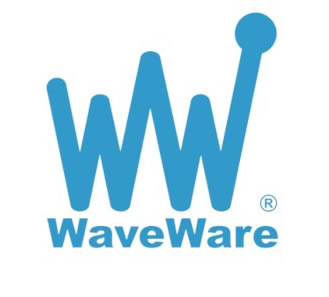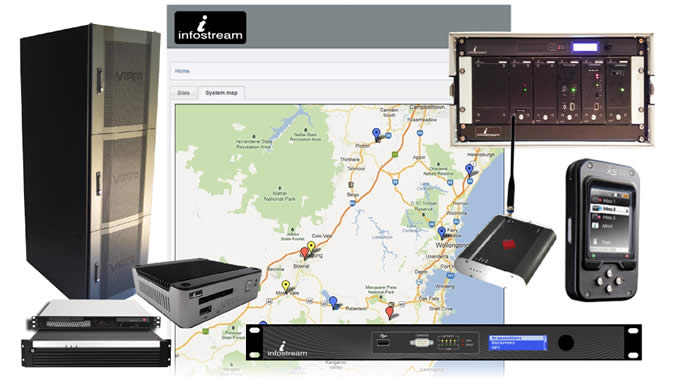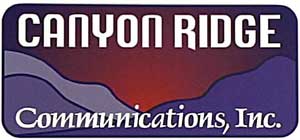Selected portions of the BloostonLaw Telecom Update, and/or the BloostonLaw Private Users Update — newsletters from the Law Offices of Blooston, Mordkofsky, Dickens, Duffy & Prendergast, LLP are reproduced in this section with the firm's permission. 
| BloostonLaw Private Users Update | Vol. 15, No. 12 | December 2014 |

FCC Adopts Electronic Distribution of Wireless License Authorizations and Antenna Structure RegistrationsThe FCC has now adopted its proposal to make electronic delivery of license authorizations and ASR registrations the default method of delivery. As originally reported in our October 2014 Private User Update, the FCC’s process would provide for two methods of electronic delivery: (a) directly through the License Manager module in ULS or the Dashboard module in the ASR system or (b) via e-mail upon the grant of an application if the applicant provides the FCC with an e-mail address. The FCC acknowledged that not all users will want to receive their authorizations or registrations electronically and will therefore allow licensees and registrants the option of electing delivery of documents by U.S. Mail in the License Manager or Dashboard modules, even though the default delivery method will now be electronic delivery. While electronic delivery of authorizations and registrations is ecologically sound, there are pitfalls that you should be aware of if you do not receive a paper copy in the mail. If the e-mail option is selected, it is possible that e-mails could be lost in cyberspace, accidentally deleted or directed to your SPAM filter. Additionally, the responsible person for FCC matters in your company may leave or change email address, and notifying the FCC of this change may be overlooked such that the e-mail is never received. Receipt of a paper document from the FCC will serve as an indication that an application has been granted and can be received without regard to personnel changes. Additionally, if your physical address is changed, you have the ability to have your mail forwarded to your new physical address by the US Postal Service for an interim period so that you can notify us to update your physical mailing address in the FCC’s licensing systems. It is important to note that the “official” electronic authorizations or registrations that will be sent from the FCC via e-mail or through its License Manager or Dashboard modules will be the only official electronic documents that may be used. To protect the integrity of the FCC’s licensing systems, official licensing documents will contain a watermark which reads “Official Copy” when printed from the secure side of the FCC’s ULS database in order to distinguish it from FCC authorizations or registrations that are printed by the public from the public side of the ULS license database. Those authorization and registration copies will continue to bear a “Reference Copy” watermark and cannot be used as the official authorization or registration. As a result, Reference Copies cannot be relied upon for compliance with the FCC’s requirement that licensees maintain an official copy of the license authorization or ASR registration. Thus, if you elect electronic delivery, it will be critical for you to print off an official copy from either your e-mail (if you elect e-mail delivery) or your ULS dashboard account and not from the public side of the FCC’s ULS or ASR systems. For the reasons discussed above, we recommend that all of our clients continue to receive their authorizations via the US Postal Service. In this way, you can avoid the potential pitfalls of non-delivery if there are personnel or e-mail address changes. Since the FCC’s default will now be authorizations via e-mail/electronic delivery, we recommend that your license records be updated to reflect the desire to receive authorizations via US Postal Service. FCC Issues Warning – Signal Jammers Illegal, Even For State and Local GovernmentsThe FCC is once again warning the public that the use of signal jammers is illegal. What is different about this warning is that the FCC has also targeted state and local governments, including state and local law enforcement agencies and educational institutions. Simply put, if you are not an authorized Federal agency, you may not utilize signal jamming equipment. There are indications that various state and local agencies use signal jammers to block cell signals for a variety of reasons. Frequently, these are used in the jail/correctional and educational environments. The FCC’s latest warning indicates that even though state or local governmental agencies may have a public interest reason to block cellular signals in or near a particular facility, such action is illegal and could result in fines in excess of $100,000 per violation. The use of signal jammers in the United States is not permitted because they are illegal radio frequency transmitters that are designed to block, jam or otherwise interfere with authorized radio communications – whether it be mobile two-way communications or commercial telephone two-way communications. As a result, these jammers indiscriminately block both cellular telephone communications and public safety radio communications, since the signal jammer is designed to block all radio communications on any device that is within range of the signal jammer. The blocking of cellular telephone communications makes it impossible for the user to make a 911 call in the event of an emergency. Additionally, even if a call can be made, a signal jammer can also block the GPS location data from a cell phone which can make it difficult for first responders to locate the emergency. In addition to banning the operation of signal jammers in the United States, it is also illegal to import, market or sell these devices online, in stores or otherwise. Again, violations could result in the imposition of fines in excess of $100,000. Federal Aviation Administration Streamlines its NOTAM System to Improve Light Outage ReportingThe Federal Aviation Administration has developed plans to streamline its processes with respect to Notices to Airmen (NOTAMs). NOTAMs are critical for aviation safety and are used to notify pilots of various conditions, including light outages and other lighting defects on antenna towers. Under the FCC’s Rules, tower owners are required to notify the FAA within 30 minutes of discovering a light outage or malfunction. Currently, the NOTAM is valid for 15 days, which means that the tower owner must again contact the FAA to cancel the NOTAM and have it reissued if the repairs have not been completed. In this regard, the FCC noted that there are circumstances where it is not possible to make repairs within the 15-day NOTAM period. Additionally, because NOTAMs are now submitted electronically, the FCC and FAA were concerned that the proliferation of electronic filings could make it difficult for the FAA and FCC to track the status of antenna tower – which could then have an adverse impact on aviation safety. The FAA expects to complete the system upgrade to its NOTAM reporting system by mid-January 2015. Once the system upgrades are complete, tower owners will be able to self-select the amount of time needed to repair a faulty tower light or tower lighting. It is important to note that even though you will be able to select the time-period for the NOTAM, it is critical that it be affirmatively cancelled once repairs are complete, so that there is no pilot confusion. The FCC believes that the new process will ease administrative burdens on tower owners by allowing them to determine how long the NOTAM will remain in effect. The FCC cautioned that it will continue to monitor NOTAMs and may investigate those where a tower owner selects an unusually long period to make a repair, as well as circumstances where multiple NOTAMs have been issued for the same antenna tower within a relatively short period of time or where a tower owner fails to cancel a NOTAM once repairs have been completed. Controversy Abounds with Marriott Proposal to Allow Wi-Fi BlockingIn August 2014, Marriott International, Inc., Ryman Hospitality Partners and the American Hotel and Lodging Association requested that the FCC clarify the circumstances under which hotels may block customer Wi-Fi hotspots on their properties in order to protect the security of the hotel property’s Wi-Fi networks. In particular, the FCC was asked to clarify that use of FCC-authorized equipment in the monitoring of a Wi-Fi network to ensure the stability and reliability of the network would not violate the Communications Act or FCC’s Rules in those circumstances where its use also caused interference to mobile devices including Wi-Fi hotspots. While the hotels have argued that the use of Wi-Fi hotspots can subject a hotel’s Wi-Fi system to hacking, news reports indicate that Google, Microsoft and others believe that the hotel industry’s petition is merely a ploy to force hotel guests and convention exhibitors to utilize expensive in-hotel Wi-Fi systems rather than mobile hot-spot devices that cellular carriers that have already been paid for. In October, 2014, Marriott agreed to pay $600,000 to resolve an FCC investigation into whether Marriott had intentionally interfered with and disabled Wi-Fi networks established by consumers in the conference facilities of the Gaylord Opryland Hotel and Convention Center in Nashville, Tennessee, in violation of Section 333 of the Communications Act. This portion of the Act prohibits willfully or malicious interference to radio communications. In the course of the investigation, the FCC’s Enforcement Bureau determined that Marriott employees had used the containment features of a Wi-Fi monitoring system at the Gaylord Opryland to prevent individuals from connecting to the Internet via their own personal Wi-Fi networks, while at the same time charging consumers, small businesses, and exhibitors as much as $1,000 per device to access Marriott’s Wi-Fi network. In some cases, employees sent de-authentication packets to the targeted access points, which would dissociate consumers’ devices from their own Wi-Fi hotspot access points and, thus, disrupt consumers’ current Wi-Fi transmissions and prevent future transmissions. FCC Order Implementing Changes to 700 MHz Public Safety Narrowband Spectrum Allocation Effective January 2, 2014As reported in our October 2014 edition of the Private User Update, the FCC has adopted rules which will implement changes to the rules governing the 700 MHz public safety narrowband spectrum (769-775/799-805 MHz) that are designed to promote the flexible and efficient use of public safety spectrum in the 700 MHz band. With the exception of certain information collection requirements, these rules will be effective January 2, 2014. The new rules eliminated the December 2016 interim deadline to narrowband these frequencies to 6.25 kHz wide channels, and revised and updated various technical rules in order to enhance interoperability and open up channels to new uses. Finally, the FCC released reserve spectrum in order to make sufficient spectrum available to licensees migrating from the UHF T-Band. The FCC’s actions also include the following: - Re-designation of channels in the 700 MHz band that are currently licensed for secondary trunking operations for public safety aircraft voice operations, consistent with NPSTC’s 2010 proposal in order to facilitate air-ground use.
- Declining to establish a Nationwide Interoperability Travel Channel.
- Allowing voice operations on Data Interoperability Channels on a secondary basis.
- Reallocating the Reserve Channels to General Use Channels and affording T-Band public safety licensees priority for licensing of the former Reserve Channels in T-Band areas.
- Declining to increase the permissible 2 watt ERP for radios operating on the mobile-only low power channels.
- Encouraging manufacturers of 700 MHz public safety radios to obtain Compliance Assessment Program (CAP) certification for new equipment to demonstrate that the equipment meets P25 interoperability standards as required by Section 90.548 of the Commission’s rules. CAP certification will presumptively establish compliance with Section 90.528; manufacturers that elect not to obtain CAP certification must disclose their basis for asserting compliance.
- Encouraging Public Safety Licensees to incorporate CAP into their solicitations for supporting equipment.
- Adopt rules governing the spectral output of signal boosters when simultaneously retransmitting multiple signals.
- Adopting Effective Radiated Power (ERP) as a regulatory parameter in this band, in place of Transmitter Power Output (TPO).
- Recommending (but not mandating) that 700 MHz radios operating on interoperability calling channels employ the Project 25 Network Access Code (NAC) $293. The FCC also clarified that 700 MHz radios must be capable of being programmed to any of the 64 interoperability channels, but that all interoperability channels do not have to be accessible to the radio’s user.
- Clarifying that the rules do not allow analog operation on the 700 MHz interoperability channels.
FCC Grants Missouri Department of Public Safety Waiver of Station Identification RulesThe Missouri Department of Public Safety has received a waiver of Rule Section 90.559 – which requires that the transmission of digital station identifications on trunked systems to be on the lowest frequency utilized in a group of trunked channels. In requesting the waiver, the State of Missouri stated that its statewide radio network is a “Project 25 trunked multiband hybrid VHF/700/800 MHz statewide public safety network that provides state, local and federal interoperable communications capabilities . . . currently supporting over 21,000 radios and 800 agencies.” Additionally, Missouri stated that it developed a master list for control channels in 2012 and that several sites use a control channel from the master list that is the lowest frequency. As a result, Missouri submitted that the lowest channels cannot be designated for base station identification purposes since the periodic station identification would “’interrupt the constant service’ provided to the subscriber units by the control channel.” In granting the rule waiver, the FCC concluded that the purpose of the rule to allow station identification would not be served by the rule itself and that requiring the Missouri to comply with the rule would be unduly burdensome. Because Missouri will be permitted to transmit its base station identification on other channels, the FCC concluded that the purpose of its rule would not be frustrated. Nonetheless, Missouri has indicated to the FCC that in future deployments, it will endeavor to make the lowest channel in a trunked channel array the designated channel for station identification where possible. |




































 David George and Bill Noyes
David George and Bill Noyes

































